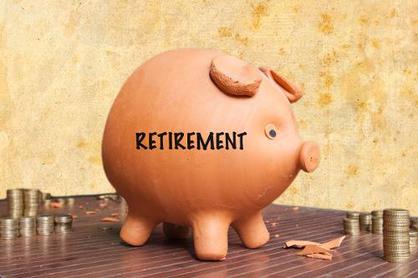Speros Financial Retirement Tip of the day!
http://www.sperosfinancial.com/ 602-531-5141
Part-time work is the fastest-growing source of retirement income.
By Emily Brandon Jan. 27, 2014
Unlike most adults who depend on a single paycheck, most retirees receive income from several sources. Monthly Social Security payments, income from savings and investments and a part-time job are among the most common ways seniors are financing their retirement years. These and other retirement income streams produced an average income of $31,742 for people age 65 and older in 2012, according to a recent AARP Public Policy Institute analysis of Census Bureau data. Here's how older Americans are paying their bills in retirement:
Social Security. The majority (84 percent) of people age 65 and older received income from Social Security in 2012. "We still see that Social Security is the foundation of retirement income," says Gary Koenig, director of economic security at AARP's Public Policy Institute. "Pretty much everyone who is 65 and older receives Social Security." Social Security has consistently provided more than a third of income for retirees over the past two decades, and retirees in the lowest income quintile received more than 80 percent of their income from Social Security. The median Social Security benefit was $16,295 for men and $11,999 for women in 2012, AARP found.
Retirement savings. Just under a third (30 percent) of retirees receive income from either a traditional pension or take withdrawals from a retirement savings account such as a 401(k) or individual retirement account. The median amount of income retirees received from these sources was $12,000 per year. High-income retirees are the most likely to have a pension or retirement account from a former employer. Over half of retirees (55 percent) in the highest income quintile had retirement accounts that provided them with a median of $30,000 in 2012, compared with just 5.2 percent of people in the lowest income quintile who received a median of $2,400.
Many seniors have additional retirement savings outside of their designated retirement accounts, but in most cases, they only receive a small amount of interest income. While 47 percent of retirees receive interest generated by their personal savings, half reported $255 or less in annual interest payments. "There are some folks for who it is providing a significant amount of income, but the majority is not receiving much income from assets," Koenig says. The share of asset income from interest, dividends and rent has declined from 24 percent in 1990 to 11 percent in 2012, largely due to the decline in interest rates, AARP found. "The Federal Reserve policy keeping interest rates down isn't good for seniors. They need a magnifying glass to see how much they have been earning on their savings," says Pamela Yellen, author of "The Bank On Yourself Revolution: Fire Your Banker, Bypass Wall Street, and Take Control of Your Own Financial Future." "Let's say you have $250,000 in savings and you planned on earning 4 percent. That's $10,000 per year. If that drops to 1 percent, as it has now, you end up with only $2,500 per year."
Earnings. Those who can't generate enough money to retire well though Social Security, pensions, or savings and investments are increasingly choosing to stay in the workforce at least part time. "If their portfolio, their investments, their savings that they have accumulated to retire with are not enough to provide them with the lifestyle that they want in retirement, then a part-time job is certainly something that they should consider," says Ken Moraif, a certified financial planner for Money Matters in Plano, Texas. "If you are 60, you could work for another 10 or 15 years part time to generate some income."
Some 22 percent of people continue to work during the traditional retirement years, earning a median of $25,000, the highest amount of any income source, AARP found. The proportion of income retirees earn by working has doubled from 15 percent in 1990 to 30 percent in 2012. "For people who are working, it is a very significant source of their income," Koenig says. "We anticipate that earnings will become a growing source of income for older Americans."
Vasilios "Voss" Speros 602-531-5141
#LifeInsurance #RetirementStrategies #sperosfinancial
http://www.sperosfinancial.com/
https://www.linkedin.com/pub/vasilios-%22voss%22-speros/60/722/67b
[email protected]
85254
http://www.sperosfinancial.com/ 602-531-5141
Part-time work is the fastest-growing source of retirement income.
By Emily Brandon Jan. 27, 2014
Unlike most adults who depend on a single paycheck, most retirees receive income from several sources. Monthly Social Security payments, income from savings and investments and a part-time job are among the most common ways seniors are financing their retirement years. These and other retirement income streams produced an average income of $31,742 for people age 65 and older in 2012, according to a recent AARP Public Policy Institute analysis of Census Bureau data. Here's how older Americans are paying their bills in retirement:
Social Security. The majority (84 percent) of people age 65 and older received income from Social Security in 2012. "We still see that Social Security is the foundation of retirement income," says Gary Koenig, director of economic security at AARP's Public Policy Institute. "Pretty much everyone who is 65 and older receives Social Security." Social Security has consistently provided more than a third of income for retirees over the past two decades, and retirees in the lowest income quintile received more than 80 percent of their income from Social Security. The median Social Security benefit was $16,295 for men and $11,999 for women in 2012, AARP found.
Retirement savings. Just under a third (30 percent) of retirees receive income from either a traditional pension or take withdrawals from a retirement savings account such as a 401(k) or individual retirement account. The median amount of income retirees received from these sources was $12,000 per year. High-income retirees are the most likely to have a pension or retirement account from a former employer. Over half of retirees (55 percent) in the highest income quintile had retirement accounts that provided them with a median of $30,000 in 2012, compared with just 5.2 percent of people in the lowest income quintile who received a median of $2,400.
Many seniors have additional retirement savings outside of their designated retirement accounts, but in most cases, they only receive a small amount of interest income. While 47 percent of retirees receive interest generated by their personal savings, half reported $255 or less in annual interest payments. "There are some folks for who it is providing a significant amount of income, but the majority is not receiving much income from assets," Koenig says. The share of asset income from interest, dividends and rent has declined from 24 percent in 1990 to 11 percent in 2012, largely due to the decline in interest rates, AARP found. "The Federal Reserve policy keeping interest rates down isn't good for seniors. They need a magnifying glass to see how much they have been earning on their savings," says Pamela Yellen, author of "The Bank On Yourself Revolution: Fire Your Banker, Bypass Wall Street, and Take Control of Your Own Financial Future." "Let's say you have $250,000 in savings and you planned on earning 4 percent. That's $10,000 per year. If that drops to 1 percent, as it has now, you end up with only $2,500 per year."
Earnings. Those who can't generate enough money to retire well though Social Security, pensions, or savings and investments are increasingly choosing to stay in the workforce at least part time. "If their portfolio, their investments, their savings that they have accumulated to retire with are not enough to provide them with the lifestyle that they want in retirement, then a part-time job is certainly something that they should consider," says Ken Moraif, a certified financial planner for Money Matters in Plano, Texas. "If you are 60, you could work for another 10 or 15 years part time to generate some income."
Some 22 percent of people continue to work during the traditional retirement years, earning a median of $25,000, the highest amount of any income source, AARP found. The proportion of income retirees earn by working has doubled from 15 percent in 1990 to 30 percent in 2012. "For people who are working, it is a very significant source of their income," Koenig says. "We anticipate that earnings will become a growing source of income for older Americans."
Vasilios "Voss" Speros 602-531-5141
#LifeInsurance #RetirementStrategies #sperosfinancial
http://www.sperosfinancial.com/
https://www.linkedin.com/pub/vasilios-%22voss%22-speros/60/722/67b
[email protected]
85254



 RSS Feed
RSS Feed